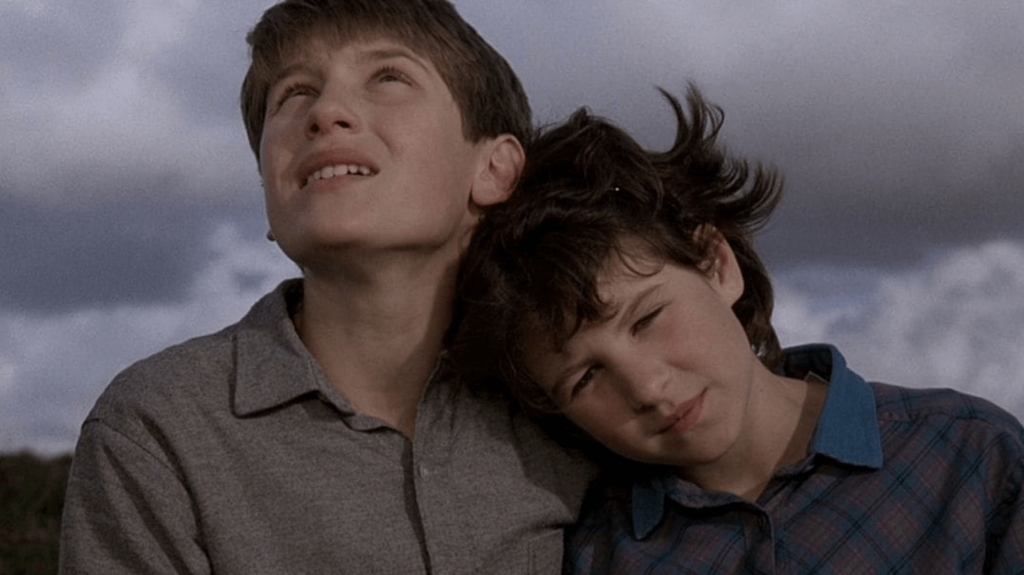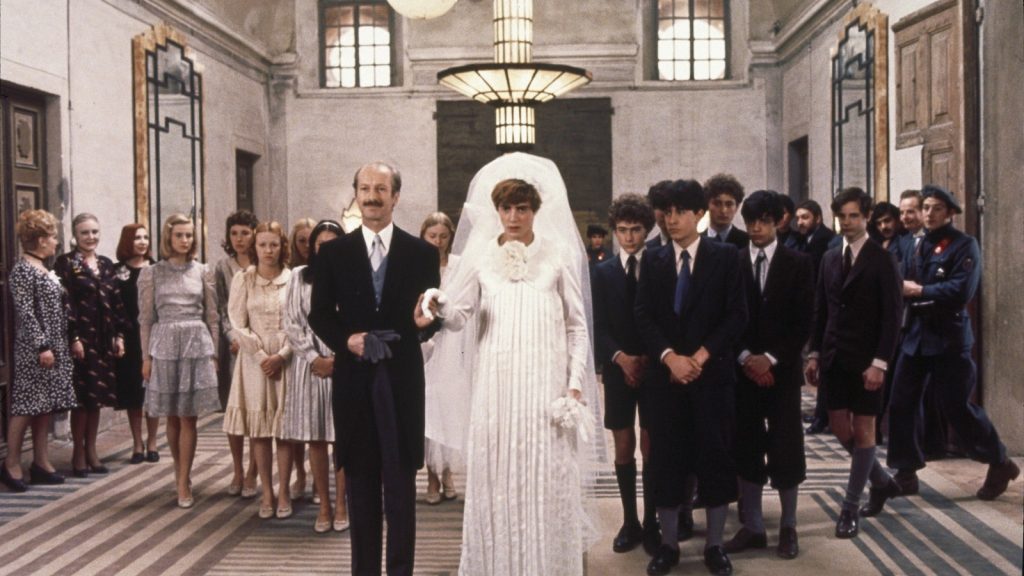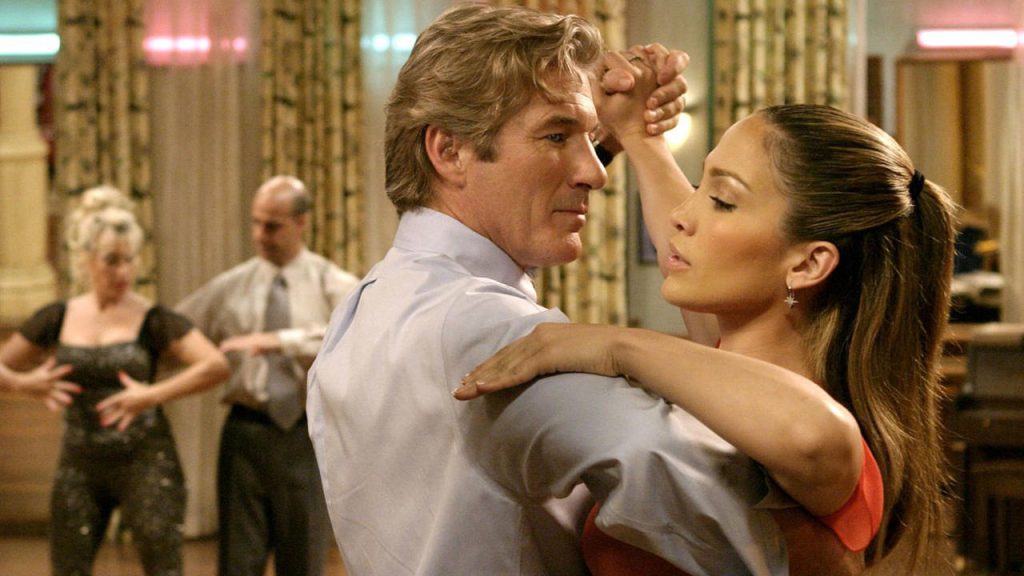From its earliest beginnings, cinema has attempted to capture and replicate the imaginative wonder of children, resulting in some of the most popular family classics of all time: The Wizard of Oz, Alice in Wonderland, Willy Wonka and the Chocolate Factory, The Never Ending Story, etc.
But wondrous as these movies are, they’re also goddamned terrifying, each one responsible for instilling heavy doses of kindertrauma in generations of viewers. One thing these and other films of their ilk understand intrinsically is that there’s actually no place more scarier than a child’s imagination.
This dichotomy has served as the basis for a number of adult dramas that explore the darker side of imaginative fantasy, particularly the power they hold as both coping mechanisms for, as well as warping influences on, children’s reality. Like the dreamscapes at their center, these films exist in a weird liminal zone, combining fantasy, folk horror and coming-of-age drama.
In Val Lewton’s The Curse of the Cat People (1944), the lonely young daughter of the central couple from the original Cat People begins seeing visions of her father’s deceased first wife—the descendant of a race of werecats—while struggling to adjust to her creepy new suburban surroundings. The forgotten 1965 southern gothic odyssey The Fool Killer finds a young runaway traversing the ravaged wastelands of the Reconstructionist South while stalked by the mythical (but possibly real) axe-wielding serial killer of the title. The similarly gothic 1990 cult classic The Reflecting Skin swaps the American South for the American Midwest to tell the disturbing tale of an Idaho farm boy in the ‘50s who redirects the terrors of his daily life—poverty, abusive/neglecting parents, and a roving group of pedophile serial killers—onto an obsession with the mysterious, possibly vampiric widow next door. Terry Gilliam’s Tideland (2005) finds a small Texas girl, orphaned after both of her parents die of drug overdoses, similarly twisting her horrific everyday life into a grungy, dopesick wonderland.
This narrative is by no means relegated only to American shores. Across the pond, we find examples in Alan Clarke’s 1974 BBC teleplay Penda’s Fen, an exceptionally dense and strange character study of a conservative but closeted teenage boy in rural Worcestershire, whose slow-dawning realization about his true self comes by way of waking nightmares involving gargoyles, pagan kings, and wandering spirits. There’s also Bernard Rose’s Paperhouse (1988), which sees an 11-year-old girl’s artistic renderings induce fever dreams that have the power to affect what happens in the real world.
Franco-era Spain is backdrop for the little girls of both Spirit of the Beehive (1973) and its spiritual progeny Pan’s Labyrinth (2006), who rebel against their oppression by delving into their fantastical visions populated by monsters (Frankenstein in the former, a secret commonwealth of Arthur Machen-like faeries in the later); while conservative Oceania of the ‘50s serves as the setting for both Celia (1989)—about a troubled young girl living on the outskirts of Melbourne during its Red Scare, who becomes obsessed with a regional folktale surrounding lepus-like goblin creatures called The Hobyahs—and Heavenly Creatures (1994)—the true-life story of two Christchurch schoolgirls whose romantic obsession with one another, as well as the various fantasy worlds they’ve co-authored, morphs into a dangerous codependence and shared psychosis, both of them concluding with shocking acts of violent reckoning.

These films all share an understanding of how the fantasy landscapes children conjure for themselves are shaped by the political landscapes in which they actually reside. The Curse of the Cat People betrays the anxieties of the American middle class during the era of White Flight (with the protagonists of the first film literally fleeing from the memory of the dead Eastern European woman they left behind in New York City); the malformed grotesqueries that populate The Fool Killer, The Reflecting Skin, and Tideland seem to spring from the very soil of their scoured, impoverished countrysides; and the fascist regime in Spirit of the Beehive and Pan’s Labyrinth, as well as the less outwardly brutal, but still cruelly repressive conservative governments of Britain, Australia and New Zealand during the post-war decades in Penda’s Fen, Celia and Heavenly Creatures, force their child protagonists to psychically flee from their intolerable realities.
But these films aren’t merely political allegories. Indeed, they are less about children undergoing a sense of political revelation than the realization that the world outside of them doesn’t fit within the vision of it they’ve been told by their parents, teachers and fairy tales. It would be equally wrong to boil them down to simple coming-of-age stories. That so many of these movies contain a magical realist bent – or at least an ambiguous one – speaks to their nature as fantasy films in and of themselves.
All of these films lean heavily on folklore, with a number of them appearing last year’s exhaustive history of cinematic folk horror documentary Woodlands Dark and Days Bewitched, and Celia and Penda’s Fen being included alongside it and in Severin’s massive All the Haunts Be Ours box set; it is as part of that tradition which they should be regarded. If there’s one thing they have in common more than even their focus on regional politics or folklore, it’s the elusive eldrichtian tone they convey – one which very much captures the more surreal corners of children’s dreams and nightmares.
While a few of these films proved successful during the time of their release, none save Heavenly Creatures and Pan’s Labyrinth are well known today, and several (including Heavenly Creatures) are widely unavailable to the viewing public. In a way this is fitting, as the sense of discovery that comes from watching The Fool Killer, Penda’s Fen, Celia, Paperhouse and The Reflecting Skin only adds to their dreamlike power.
These films were never easy sells to begin with – far too disturbing and dense for younger viewers, too fantastical for older, ‘serious’ viewers – but they fit even less in today’s cinematic landscape, despite the fact that the majority of studios and audience’s focus is given over to fantasy films aimed at kids and adults simultaneously. But said fantasy films (sleek, inoffesnive, aspirational and increasingly solopstisitc corporate productions based on existing IP) contain none of the wonder, terror, or for that matter, imagination, found in classic children’s fantasy films, let alone these darker dramas explicitly about children’s fantasies.



